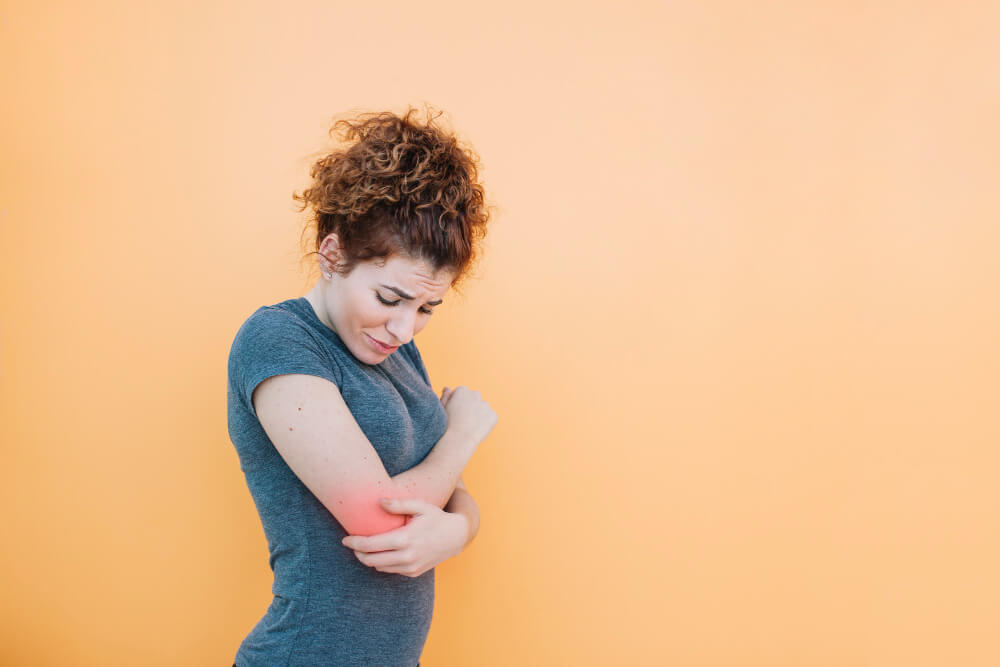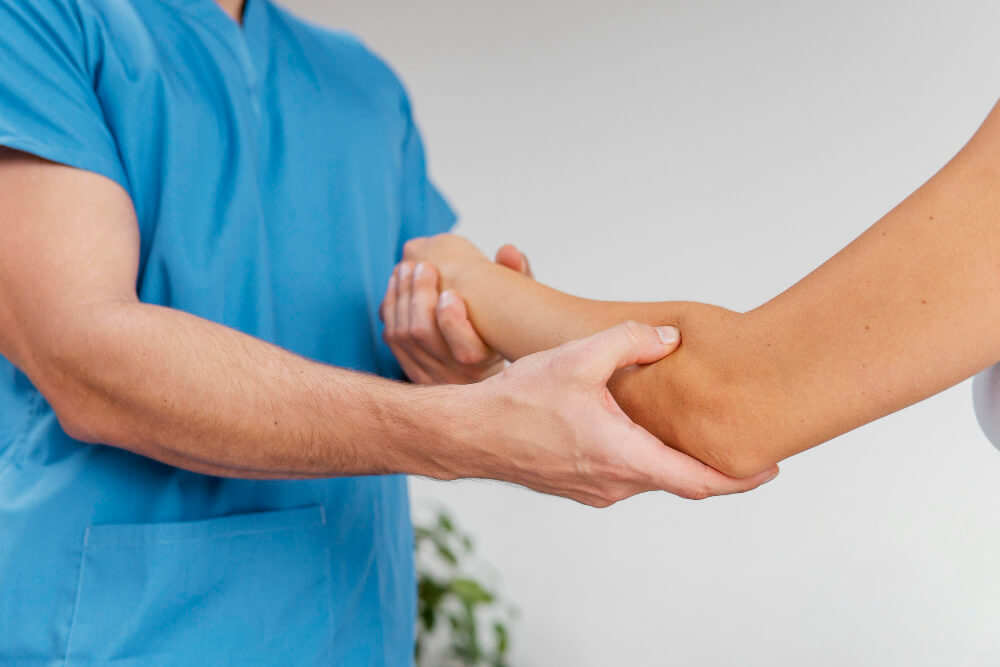Understanding and Overcoming Elbow Pain: A Guide to Golfers Elbow and Treatment Options
Elbow pain can be a frustrating and debilitating issue, impacting everyday activities and hobbies. While it’s commonly associated with golfers, elbow pain can affect individuals of all backgrounds and activity levels. This comprehensive guide explores the causes and symptoms of elbow pain, focusing specifically on golfers elbow, and delves into various treatment options to help you find relief and get back to enjoying your life pain-free.
Demystifying Elbow Pain: Understanding the Causes
Elbow pain can stem from various causes, affecting different parts of the elbow joint. Here’s a breakdown of the most common culprits:
- Tendonitis: This inflammation of the tendons, the connective tissue attaching muscles to bone, is often the culprit behind elbow pain. Overuse or repetitive motions can irritate the tendons, leading to pain and tenderness.
- Bursitis: Bursae are fluid-filled sacs cushioning joints. Bursitis occurs when these sacs become inflamed due to overuse, pressure, or injury, causing pain and swelling.
- Arthritis: This degeneration of joint cartilage can affect the elbow joint, leading to pain, stiffness, and limited mobility.
- Ligament sprain: Stretching or tearing a ligament, the connective tissue stabilizing joints, can cause pain, inflammation, and instability in the elbow.
- Fractures: Although less common, fractures in the bones of the elbow can cause significant pain, swelling, and bruising.
Recognizing the Signs and Symptoms of Golfer’s Elbow
Golfer’s elbow, medically known as medial epicondylitis, is a specific type of tendonitis affecting the tendons on the inner side of the elbow. It’s commonly seen in individuals who participate in activities involving repetitive gripping or forceful wrist flexion, such as golfers, tennis players, and weightlifters.
Here are the key symptoms of golfer’s elbow:
- Pain and tenderness: The most prominent symptom is pain and tenderness on the inner side of the elbow, near the bony bump.
- Weakness: Gripping objects or activities requiring wrist flexion might feel weak and challenging.
- Stiffness: Reduced flexibility and stiffness in the elbow joint are common.
- Pain during specific activities: Pain may worsen during activities that involve gripping or forceful wrist flexion, like swinging a golf club or carrying heavy objects.
Effective Treatment Options for Elbow Pain and Golfer’s Elbow
Early diagnosis and treatment are crucial for managing elbow pain effectively and preventing further complications. Different treatment options exist, depending on the severity of the pain and the underlying cause.
Non-Surgical Treatment Approaches:
- Rest and Activity Modification: Avoiding activities that exacerbate the pain is essential. Taking a break from aggravating activities allows for healing and reduces inflammation.
- Ice Therapy: Applying ice packs to the affected area for 15-20 minutes, several times a day, can help reduce pain and swelling.
- Anti-inflammatory Medication: Over-the-counter pain relievers like ibuprofen or naproxen can help manage pain and inflammation.
- Compression: Wearing a compression sleeve or bandage can offer support and reduce swelling.
- Physical Therapy: A physical therapist can design a personalized exercise program to improve flexibility, strengthen the muscles around the elbow, and improve overall joint function.
- Bracing: Wearing a specialized elbow brace can help stabilize the joint and provide support, allowing for gradual healing.
Surgical Intervention (For severe cases only):
In rare instances, if conservative treatment methods fail to provide relief, minimally invasive surgical procedures might be considered. These may involve removing inflamed tissue, repairing damaged tendons, or releasing tight ligaments.
Additional Tips for Preventing Elbow Pain and Golfer’s Elbow:
- Maintain proper form and technique: In activities like golf or weightlifting, ensure proper form and technique to minimize stress on the elbow joint.
- Warm-up and cool-down: Always warm up before engaging in physical activity and cool down afterward to promote flexibility and prevent injury.
- Strengthening exercises: Regularly performing exercises to strengthen the muscles around the elbow, including forearms and wrists, can improve stability and prevent future problems.
- Maintain good posture: Maintaining good posture helps distribute body weight evenly and prevents excess strain on the elbow joint.
- Listen to your body: Pay attention to your body’s signals. Stop any activity that causes pain and avoid pushing through discomfort.
Conclusion: Taking Control of Your Elbow Pain
Elbow pain, including golfer’s elbow, can be effectively managed with early diagnosis, proper treatment, and preventative measures. By implementing the strategies outlined in this guide, you can gain control of your pain, improve your mobility, and resume your activities with renewed confidence and enjoyment. Remember, consulting a healthcare professional for an accurate diagnosis and personalized treatment plan is crucial for achieving optimal results


